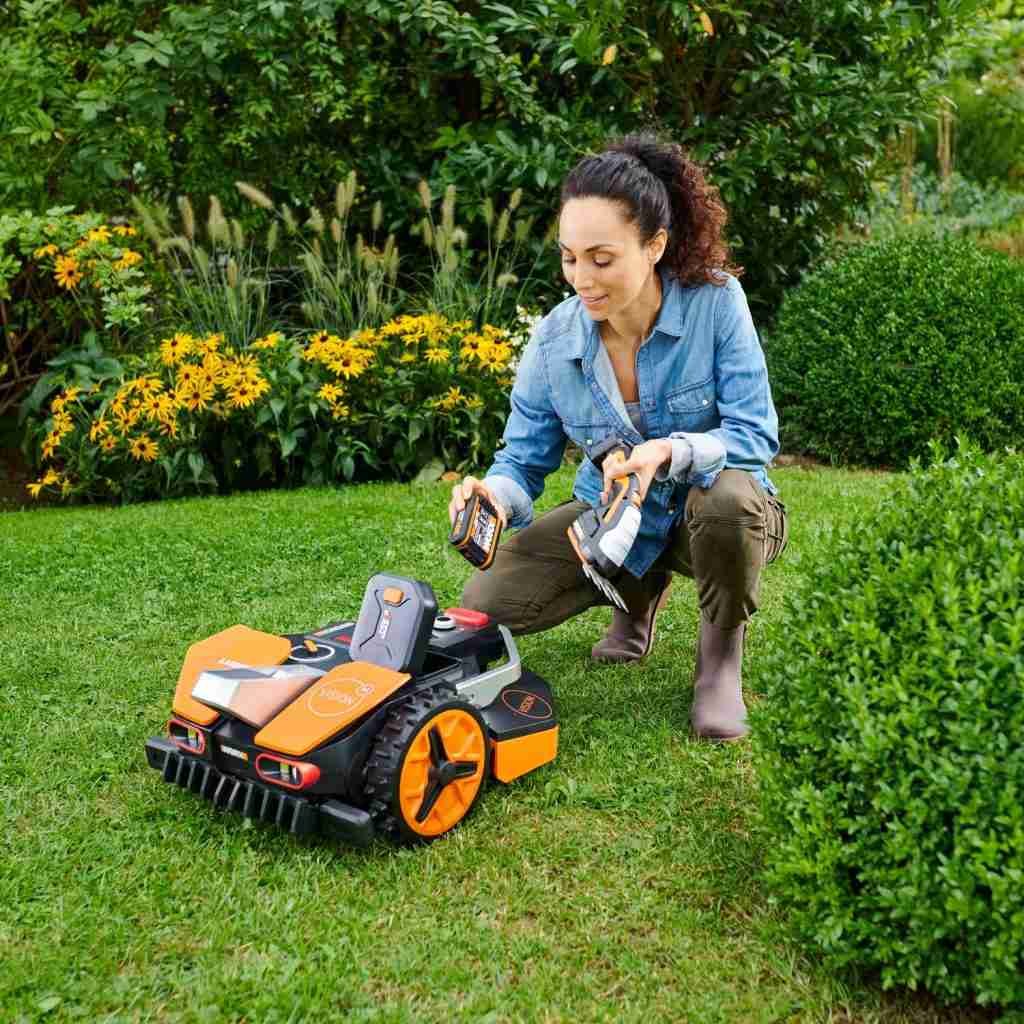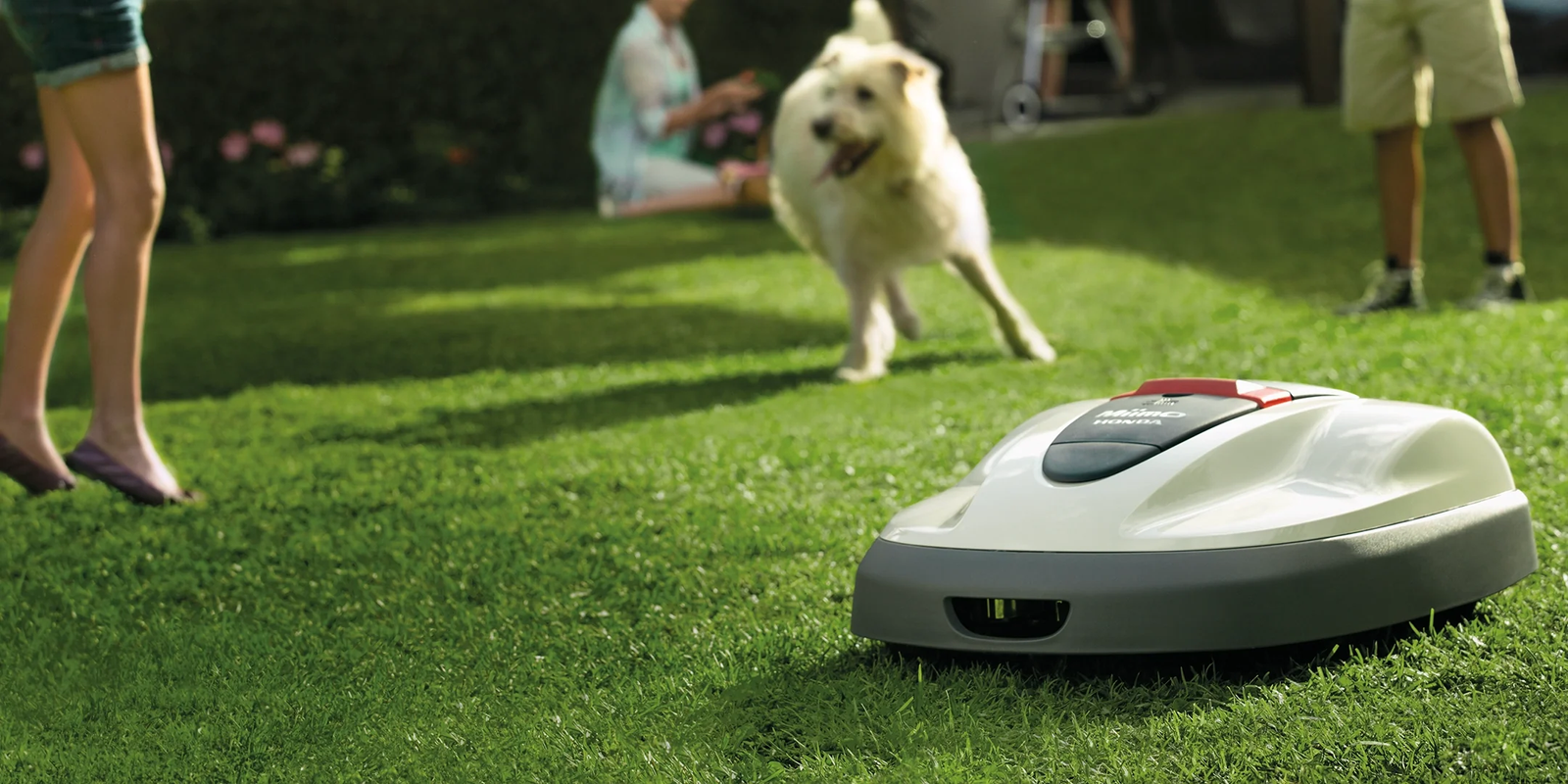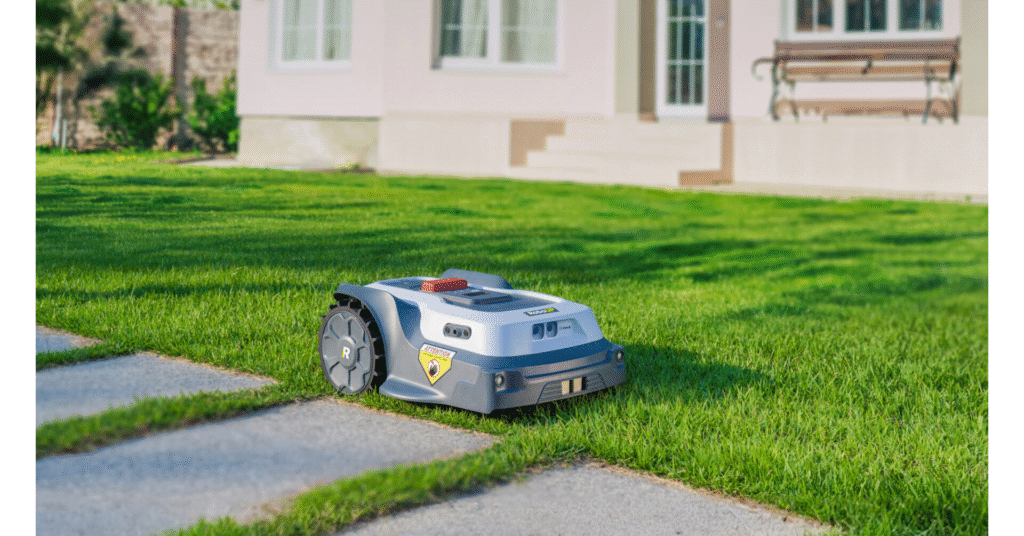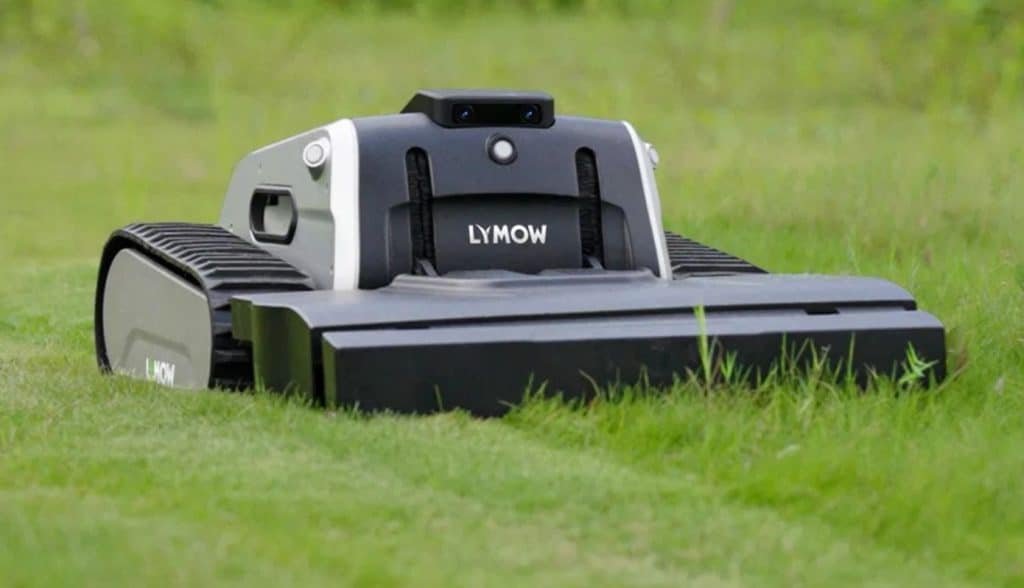Robot mowers are becoming an increasingly popular way for proud lawn owners to keep their grass healthy and neat. Time-saving, smart, and relatively eco-friendly, these automated assistants are becoming even more affordable, with an ever expanding market serving an eager customer base.
But a primary concern many people have when considering the switch from traditional to robot mower is whether or not these machines are safe? Many families will ask can robot mowers be safely operated around children and animals?
Young children should never be left unsupervised around a mowing machine, traditional or otherwise, even when considering the range of safety features robot models often come with. Regardless of assurances given by manufacturers and advertisers, no machine involving sharp blades can be deemed totally safe.
Nevertheless, it’s worth noting that effective safety mechanisms have often been seen as a priority for most robot mower manufacturers, given how high safety ranks on many consumer agendas.
As a result, and due to a number of crucial differences between robot mowers and their manually operated cousins, robot models are widely seen as being much safer than traditional mowers, and that includes for children and pets. Today, we’ll be exploring some of the reasons why.
Are robot mowers safer than traditional lawn mowers?
An automated machine drifting around your garden with sharp, rotating blades sounds like it could swiftly turn into something of a sci-fi nightmare. The reality is modern robot mowers come with a range of safety features designed to prevent accidental injury, even amongst children and animals.
Many manufacturers of robot mowers point towards statistics indicating that the rate of hospital admissions due to these machines is negligible when compared to the number of people ending up in emergency rooms due to traditional mowers.
Traditional mowers still rank as the most statistically dangerous of garden tools, resulting in tens of thousands of hospital visits across the U.S. every year, as well as a number of deaths. There is a relative scarcity of data on injuries caused by robot mowers, largely because of the comparatively lower number of users.
Manufacturers of robot mowers also have a vested interest in promoting their safety credentials, and will readily equate absence of data as being absence of harm. Still, as robot mower usage increases year upon year, it does appear that injuries related to these automated machines are far less frequent than with their traditional predecessors.
The primary cause of harm when it comes to petrol mowers is predictably the powerful, rigid blades coming into accidental contact with limbs. The power behind traditional mower blades can also cause sharp, potentially harmful debris such as stones and wood to fly out, striking the user or bystanders. Children and animals can be particularly vulnerable to such injury, particularly if left unsupervised.
Robot mowers on the other hand tend to have blades operating at a far lower level of force, although it’s worth bearing in mind that these blades are often still extremely sharp. Robot mowers are certainly far less likely to send out fast moving debris. As we shall soon see, there are also a number of safety features installed on most modern robot mowers that mean the chances of anyone getting near the blade mechanism when it’s moving should be extremely low.
What safety features do robot mowers come with?

Making sure that a product is safe for children and for family pets is often a prime concern for consumers. Robot mower manufacturers know this and have put a great deal of time and engineering effort into designing features aimed at keeping these machines as safe as possible, even for curious kids and critters.
Collision sensors
Practically every robot mower out there on the market is designed to stop or reroute when it bumps up against an unfamiliar object. This protects the blades from jarring up against a rogue stone or stump, as well as guarding against injuries to limbs, legs and feet.
Most collision sensors function via the machines outer shell, which detects any unplanned bumps or stops. Some mowers will have a mechanism that halts the blades’ rotation. Other models are designed to redirect and travel in the opposite direction if they brush up against something more resistant than the grass they’re supposed to be cutting.
There are also models where a sudden alteration in wheel speed will act as an emergency stop for the blades.
Obstacle sensors
Some higher tech models go even further, employing sensors to detect potential obstacles or foreign objects before the machine even has time to collide with it. For those concerned about pets or children being near the machine, a robot mower with a finely tuned obstacle sensor is worth considering.
Obstacle sensors come in various forms, but many rely on sonar to map the immediate area around the machine. Some modern models also employ video cameras designed to recognise different terrain as well as possible objects.
Tilt and lift automatic stops
This safety feature is arguably the most important when it comes to ensuring your robot mower is as safe as it can be around children and animals.
This feature prevents the blades from rotating as soon as the mower’s base leaves the ground. Any reputable robot mower will come with this mechanism built-in and you should avoid buying any that does not.
Many models are designed to short-circuit the blade mechanism within a fraction of a second of the mower tilting or being lifted. This means that even if a curious, unsupervised child were to attempt to peek under the mower, they would be unlikely to reach the rotating blades before the blades had stopped automatically.
Many robot mowers are also designed to cease their blade function if the mower detects it is tilted at more than a predefined angle. This means the blades should stop if the machine were to accidentally overturn or if the blades become exposed due to unplanned for bumps or slopes in the lawn surface.
In some instances, a PIN number may be needed to restart the machine after such an automatic stop. Not only does this increase the safety of the model, it also acts as a handy anti-theft device and deterrent for opportunistic thieves.
Blade positioning
We’ve already discussed how robot mowers tend to have less powerfully driven blades than their petrol counterparts. Another feature to consider when assessing how safe robot mowers are for children and pets is the actual positioning of the blades.
Most robot mowers are designed with a decent amount of clearance between the outer shell and the rotating blades. These means that it should, in theory, be difficult for a stray hand or paw to get far enough under the mechanism to touch the blades without tilting or tipping the machine, an action which should, if the correct safety features are present, immediately stop the blades anyway.
Some final thoughts
It should go without saying that no machine involving rotating blades can be deemed risk free, particularly when young children or pets are concerned. Usual precautions about keeping kids away from potentially dangerous machinery, even if a range of safety features are built-in, should always be taken.
That being said, robot mowers are increasingly coming to be seen not only as a more efficient, eco-friendly, and quiet alternative to their petrol-driven competitors, but as a safer garden tool both for adults and children.
If you are particularly concerned about the risk a robot mower could pose to pets or children, consider researching models that come with additional safety features, rather than just the bare minimum of tilt and lift emergency stops.
You might also consider investing in a robot mower that can be programmed to operate within set hours. Most models on the market now come with such a feature. This programmable option means you can set your mower to operate during the hours when you know the kids are going to be at school, or when you usually keep the dog inside the house. You could even consider having your mower running at night.
In conclusion, there are plenty of built-in safety features that mean, with the right supervision and diligence, robot mowers are at least as safe, if not safer, for children and pets than their manually operated counterparts.













